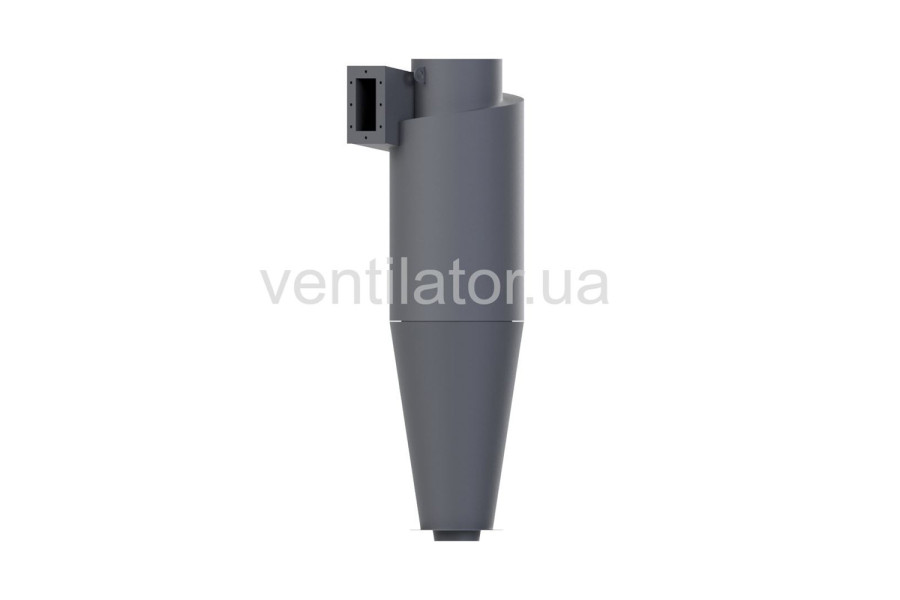




- C – cyclone;
- N – NIIOGaz design (Research Institute of Gas Equipment);
- 11 – inlet pipe inclination angle (degrees);
- 500 – diameter of the cyclone’s cylindrical body – 500 mm.






Purpose of CN-11-500 Cyclones
CN-11 cyclones are specially designed to clean gas from dust containing solid particles of various types and are essentially universal equipment, as they can handle dust that includes particles of sand, metal, and wood. This equipment is highly efficient and is virtually resistant to abrasive damage. Due to the fact that the inlet of CN-11-500 cyclones is positioned at an 11° angle, they achieve a high rotation frequency, which in turn ensures better air treatment and filtration from fine particles.
CN-11-500 cyclones in standard configuration must not be used in explosive environments. They are also not recommended for cleaning gas-air mixtures with a high content of sticky substances or materials with a liquid-droplet phase. The allowable dust concentration in the air that can be treated with CN-11-500 should not exceed 1000 g/m3.
Design of CN-11-500 Cyclones
These units can be manufactured either as single cyclones or as group units with a standard configuration of 2 or 4 units. They are available in both right-hand and left-hand versions. The standard set of components includes: a cylinder, inlet nozzle, spiral lid, cone, exhaust pipe, and scroll (some versions are made without a scroll). In single cyclones, the hopper has a cylindrical shape. The clean gas chamber in single units can only be a scroll type.
CN-11-500 is made using either ordinary carbon steel or more wear-resistant low-alloy steel. The choice of material mainly depends on the future environment and operational conditions where the CN-11-500 cyclone will be used. Carbon steel is used if the minimum operating temperature does not drop below -40 °C; otherwise, low-alloy steel is used.
CN-11 cyclones are also available in explosion-proof versions. These designs include special valves and compact hopper sizes, which significantly reduce the risk of accumulation of explosive dust.
Installation of CN-11-500 Cyclones
It is recommended to install the cyclone on the suction side of the fan. This way, the static pressure is below atmospheric, and the system minimizes abrasive impact on the fan. The gas exits with a swirl and is then straightened by an air straightener, which positively affects the system’s performance indicators (airflow rate, pressure, and filtration level). When designing a system with a fan located after the CN-11 cyclone, you can use the VC 14-46, but not VCP 5-45, VCP 6-45, VCP 6-46, or VCP 7-40.
If the cyclone is installed downstream of the fan, only dust-resistant fans should be used. An air straightener is not required in this case.
There are no reviews for this product.
There are no reviews for this product, be the first to leave your review.